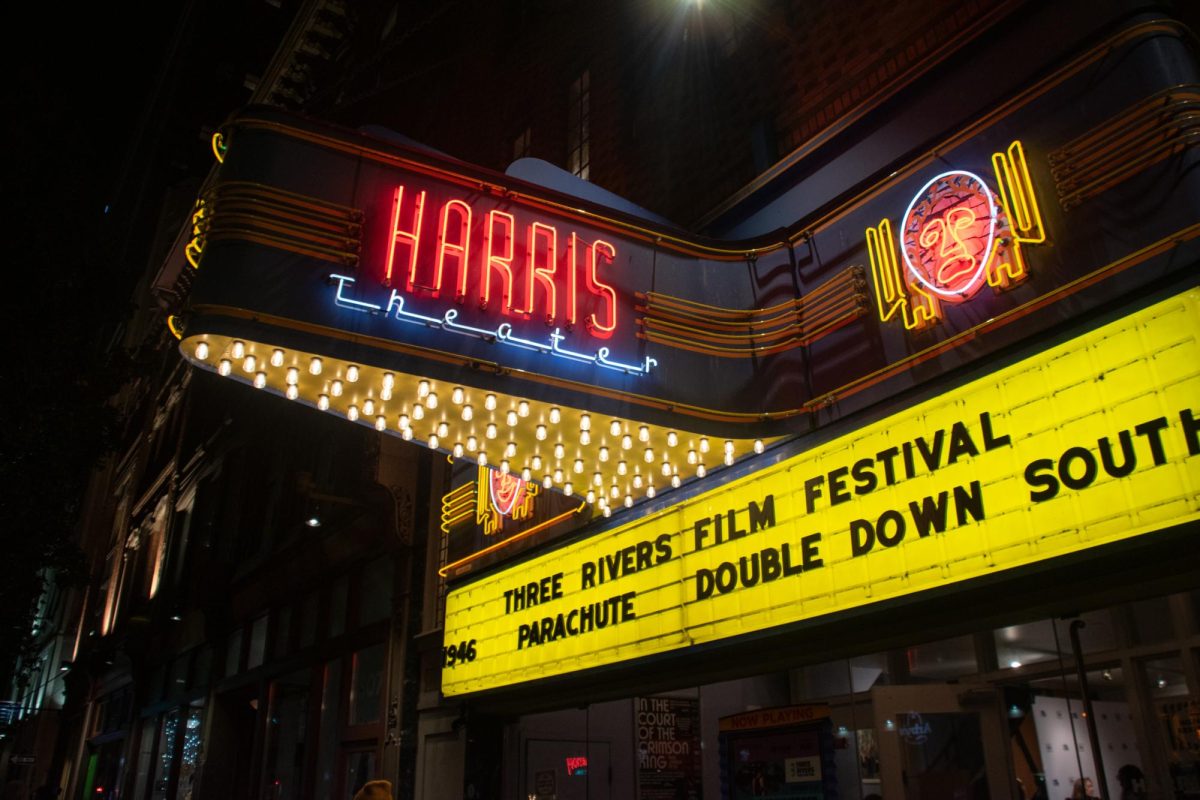Films from several European countries lit up the screen at the Harris Theater in downtown Pittsburgh for the EU Film Festival. Running from Jan. 19 to 26, the weeklong festival rang in its third year showcasing new films from other nations. The event is not confined to Pittsburgh — after its stay at the Harris Theater, the films will move across the country to other universities like the University of North Carolina, Indiana University and the University of Cincinnati.
The European Studies Center at Pitt, along with similar departments at partner colleges, worked with funding from the U.S. Department of Education and the European Union to use the art of film as a means to spread knowledge of European culture. In an effort to increase the availability of this knowledge across the University, admission to the EU Film Festival was free to Pitt’s students, faculty and staff.
The films selected for the festival were all released in the past five years. One film, “Somewhere Over the Chemtrails,” was a featured film at the Berlin Film Festival in 2022. Directors in all stages of their careers were represented as well, from renowned Polish director Agnieszka Holland to Czech newcomer Adam Rybanský. “Lonely Oaks” and “Green Border” tackled issues on the world stage, such as the survival of the Hambach Forest in Germany and the public’s awareness of the refugee crisis in Poland.
Randall Halle, director of European studies at Pitt, said the EU Film Festival employed a variety of film genres to spread stories from other cultures.
“In an era in which the United States is feeling rather insular, the ability to bring interesting and strong stories from other parts of the world is something that we’re very committed to,” Halle said. “I’ve tried to have a good mix of things that are funny, serious, documentaries, a love story and indeed some critical dramas.”
Over the course of six days, the theater played eight movies from different countries. They spanned both large nations renowned for their film history, as well as smaller countries whose breakout films have joined the world stage.
Halle said the blend of cultures on the screen mirrors Pittsburgh’s own European cultural melting pot.
“Pittsburgh itself is this city of world ethnicities, and a deep connection to especially Central Europe,” Halle said. “So we have films representing the major film countries — France, Italy, Spain, Germany, but we also have films from the smaller countries — the Czech Republic, Romania and Poland.”
Weeks of behind-the-scenes work went into creating the festival. Ingrid Gomez-O’Toole, the activities, events and partnership coordinator for the European Studies Center, said she found the experience both gratifying and difficult.
“It was very rewarding making it come all together, and [Halle] was just working with me trying to navigate through the whole system of trying to obtain these films,” Gomez-O’Toole said. “It’s a different language, so I had to learn all of that and implement it.”
All of the hard work put into the coordination for this event resulted in a space that combined education and entertainment. Not only were these films meant to entertain, but they also served as a way for attendees to learn about cultures different from their own.
Kirsten Stayer, the lead trainer in festival management at Pitt and organizer of the film festival Screenshot: Asia, said this cultural awareness was one of the most significant aspects of the festival.
“I think one of the most important things that they do is they give students and staff and faculty access to cultures that they might not be familiar with,” Strayer said. “It works to humanize so many different kinds of people that we may not have familiarity with.”
Gomez-O’Toole believed this festival also works to bring people together, saying that these films are a chance for people to see the similarities between themselves and those of other cultures.
“The topics are very captivating, and it makes you realize that the issues that are happening here in the United States are also happening over there,” Gomez-O’Toole said. “It’s nice to see the broader side. It’s bringing the culture of Europe here, and vice versa.”
Many of the films focused on hard-hitting subjects such as immigration, climate change and prejudice, leaving the audience with powerful emotions once the screen faded to black. After each showing, Randall Halle fielded audience questions in a Q&A session of the festival meant to encourage discussion about the topics they addressed. Many members of the audience shared insightful thoughts and feelings, primarily about the impact these films had.
Halle said he hopes these films will encourage conversation about the similarities and differences between the United States and the cultures on screen.
“I hope that people will watch a set of films in which they’ll see worlds that are both different from them — but also because the stories are really well told — that they’ll learn something about the similarity of those worlds,” Halle said. “That feeling displaced and also at home is something that good films can do.”


